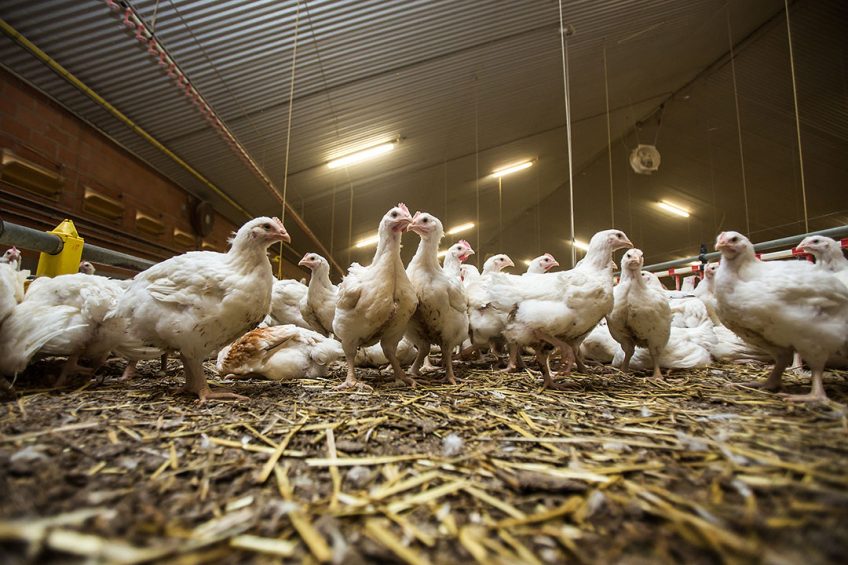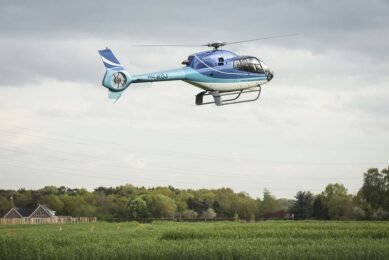4 slow-growing broiler genotypes get approval

Broilers of 4 slow-growing broiler genotypes (Ranger Classic, Ranger Gold, Rowan Ranger and Rambler Ranger) were tested for potential approval of these genotypes for a German animal welfare label programme. Animal-based welfare indicators were assessed after 36 and 44 fattening days.
In Germany and many other countries there are various labelling programmes for the rearing of broiler chickens to meet higher welfare standards. In addition to reduced stocking densities, alternative genotypes have also been suggested for use in welfare labels and have been studied for productivity or meat quality that complies with animal welfare and health indicators. In this article ‘slow-growing’ is defined as a growth rate of no more than 49.2 to 50.7 grammes/day.
In consultation with scientific, agricultural, trading and processing stakeholders the German Animal Welfare Association established an animal welfare label for broilers.
The programme provides for a 2-stage label:
- entry level
- premium level.
Entry level
The entry level requires an improvement in animal welfare compared to government requirements, for example, through reduced stocking densities, provision of environmental enrichment and a winter garden or the use of alternative genotypes.
Premium level
For the premium stage the broilers must have access to an outdoor run; a standard housing requirement in organic farming.
Genotype approval
For a new genotype to be approved an application must be submitted to the organisation. The breeder or applicant has to provide data confirming that the average daily gain in 56 fattening days does not exceed 45 g/day. The Association then decides whether to grant approval and might ask for more data on weight development and the welfare of the genotype, including an assessment of animal welfare indicators.
Competent authorities in the European Union commonly apply animal-based welfare indicators such as:
- foot pad dermatitis,
- dead on arrival,
- total rejections,
- ascites,
- cumulative daily mortality,
- joint lesions,
- hock burn,
- breast lesions,
- emaciation,
- wing fractures,
- cellulites,
- respiratory disease and
- scratches.
Not all animal welfare associations use the same list of indicators and thresholds. Sometimes gait score assessed on the farm, as well as foot pad dermatitis and hock burn assessed at slaughter, are added.
The aim of this study was to examine and compare the prevalence of animal-based welfare indicators in four slow-growing broiler genotypes. Correlations between these indicators and access to a mandatory winter garden were examined.
- The body weight of the 4 broiler genotypes differed on both examination days (36 and 44 days).
- Walking ability was within the scope of the animal welfare label for all genotypes. It was better in genotypes with a lower mean body weight and correlated positively with body weight in 3 genotypes.
- Hock burn was only observed at a low severity score, with male broilers affected more often than female broilers. A positive correlation in the development of hock burn with the weight of the broilers was observed after 44 fattening days when data for all the genotypes were pooled.
- The footpads of all the broilers examined were without lesions at both examinations.
- Skin scratches were observed in all genotypes at both examinations, with Ranger Classic showing a higher prevalence of more severe scratches. Broilers in pens with access to a winter garden were more often affected by skin scratches than broilers without. With the exception of weight gain in 2 genotypes, the indicators assessed showed that all genotypes met the requirements of the animal welfare label.
The assessed indicators were suitable for use in an animal welfare label programme, although the mandatory winter garden resulted in more skin scratches.
Join 31,000+ subscribers
Subscribe to our newsletter to stay updated about all the need-to-know content in the poultry sector, three times a week. Beheer
Beheer








 WP Admin
WP Admin  Bewerk bericht
Bewerk bericht